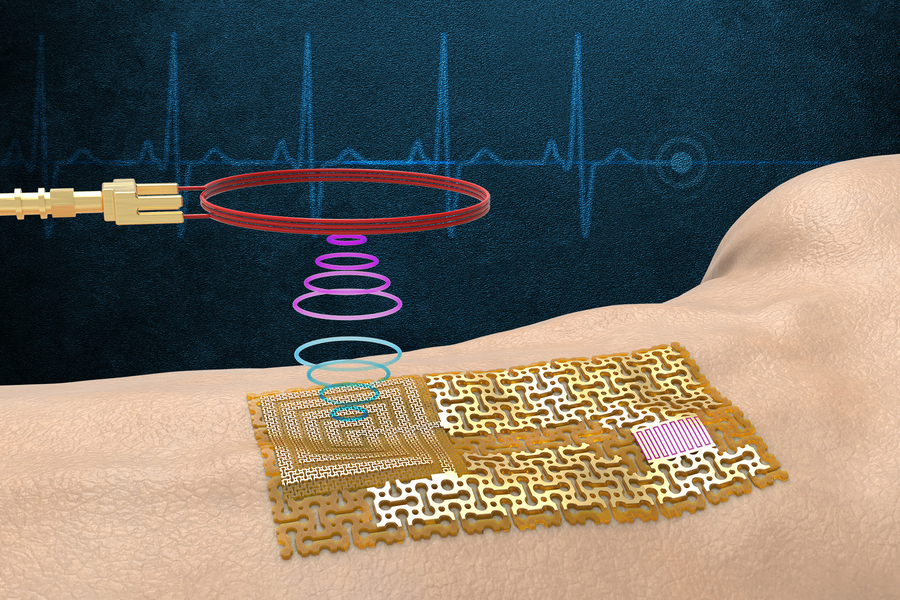MIT engineers develop wearable wireless sensor without chips and batteries.
They count daily steps, measure vital signs such as pulse or blood pressure, and evaluate sleep quality: Wearables, i.e. computer systems that can be worn on the body. These smart health aids, such as wristbands, patches, chest straps or textiles, use sensors and electrodes to monitor bodily functions and transmit the data wirelessly to devices such as smartphones. In recent years, they have become enormously widespread.
A distinction is made between freely marketable leisure wearables such as the Apple Watch and medical devices that are subject to correspondingly strict regulations for approval. The latter area in particular is considered a future market that even has the potential to revolutionize the healthcare industry. Medical wearables make it possible to monitor health parameters in real time in a comparatively uncomplicated, cost- and time-saving manner. The data obtained could contribute massively to the prevention, diagnosis and control of diseases. But the potential applications are far from exhausted: Devices are also being developed that deliver medication, alleviate pain or sound an alarm in the event of deviations from the norm.
Gallium nitride instead of chips and batteries
A team of engineers at the Massachusetts Institute of Technology (MIT) in the U.S. has now designed a technique to optimize the wireless communication of these gadgets. Until now, data transmission has usually been handled by embedded Bluetooth chips, which in turn are powered by small batteries. But both may soon be too bulky for future wearables, which tend to be smaller, thinner and more flexible, according to a university statement. Chips also have high power consumption. The design published in the journal Science, on the other hand, relies on the active principle of piezoelectricity, using the semiconductor material gallium nitride.
The piezoelectric effect describes the interaction of mechanical stress and electrical voltage in solids. Certain materials generate electrical charges under pressure. Conversely, they deform in response to an electrical impulse. Thanks to its bidirectional piezoelectric properties, gallium nitride could, according to the researchers’ idea, act simultaneously as a sensor and wireless communicator for surface acoustic waves, which are essentially vibrations. That means any change in the skin’s condition, such as an accelerated heart rate, would affect the device’s mechanical vibrations and the automatically emitted electrical signal. The latter could be transmitted to a receiver such as a smartphone, since the sensor itself does not store data or have a display.
To test the technique, the team made a kind of electronic skin from gallium nitride, a flexible, adhesive film that, at 250 nanometers, is about 100 times finer than a human hair. A layer of gold was also added to amplify the electrical signal. The ultra-thin film turned out to be sensitive enough to respond with vibrations to people’s heartbeats and to the salt in their sweat. Even more, the electrical impulse it generated could be read by a wireless receiver nearby.

MIT/Courtesy of the researchers
The researchers see their findings as a first step toward chip-free wireless sensors for health monitoring. Coupled with selective sensor membranes, various vital biomarkers could be monitored. Author and MIT postdoc Jun Min Suh cites glucose or the stress hormone cortisol, for example; it’s “a pretty versatile platform.”
More about gallium: The technology metal is a true all-rounder and could in the future also be used in climate protection, cancer research or against power blackouts.
Photo: iStock/tonefotografia


